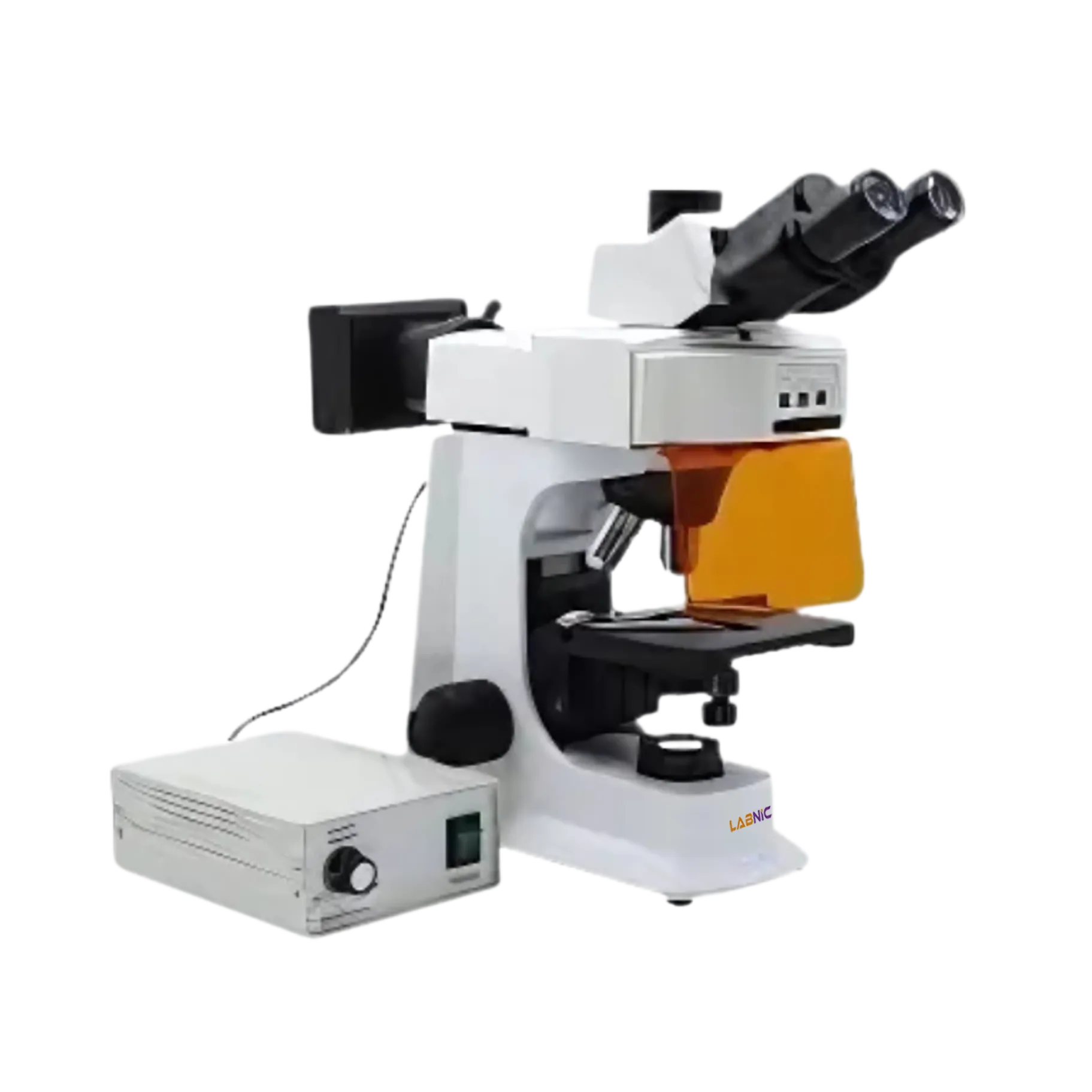
Fluorescent Microscope LBN-FM122 incorporates a Siedentopf trinocular head with 30° inclination and 360° rotation. The WF10x/20 mm high-eyepoint eyepiece and a quadruple inwardly rotating nosepiece make up the microscope. It concentrates on fine and coarse specimens and has an Abbe condenser with an iris diaphragm. A modernized halogen lamp with Kohler lighting as the light source is also featured.
| Optical System | Infinity Semi-Plan |
| Head Type | Siedentopf Trinocular |
| Rotation | 360° |
| Inclination | 30° |
| Interpupillary | 48-75 mm |
| Light Path | E80:P20 |
| Diopter | Adjustable |
| Eyepiece | WF10x/ 20mm, 2 pc |
| Eyepiece Diameter | 23.2 mm |
| Nosepiece | Inward, 4 holes |
| Objective | Infinity E-Plan |
| Working Stage Type | 2-layer Mechanical |
| Stage Size | 145 × 140 mm |
| Moving Size | 76 × 52 mm |
| Focusing Range | 26 mm |
| Scale | 0.002 mm |
| Condenser | Abbe, 1.25 N. A |
| Light Source | LED, 5W |
| Transmit Light | 3W LED |
| Reflect Light | 5W LED fluorescent light source |
| Power Supply | AC 110V/ 220V |
| Video Adapter | C-Mount 0.3x |
| Fluorescence | B, G, U, UV China Fluorescent set, 6 holes disc fluorescent unit, 5W LED lamp house, power box, UV Protection Barrier |
| Dimensions (L × D × H) | 420 × 280 × 450 mm |
| Net Weight | 15 Kg |
| Gross Weight | 18 Kg |
Fluorescence Microscope is used for sample, blood cell, and tissue culture inspection at medical research facilities, biological research labs, metallurgy, health clinics, etc.
Fluorescence Microscope is used for sample, blood cell, and tissue culture inspection at medical research facilities, biological research labs, metallurgy, health clinics, etc.
Most Frequently Asked Questions
1. Why is it called a Fluorescence Microscope?
Ans. A Fluorescence Microscope gets its name because it uses fluorescence to visualize samples. It excites fluorescent molecules, which then emit light, allowing for high-contrast imaging of specific structures.
2. What type of light source is used?
Ans. We use LEDs in our fluorescence microscopes because they are energy-efficient, long-lasting, and provide stable illumination for accurate imaging.
3. What is the use of an Abbe condenser in Fluorescence Microscope?
Ans. An Abbe condenser is needed to enhance contrast in transmitted light applications.
4. Can Fluorescence Microscopy be used for live-cell imaging?
Ans. Yes, our fluorescence microscopes are equipped with time-lapse imaging and controlled environmental conditions, making them ideal for live-cell studies.
5. Can a Fluorescence Microscope detect multiple colors simultaneously?
Ans. Yes, by using different fluorophores with distinct emission wavelengths, our fluorescence microscope can detect multiple colors in a single sample.
Fluorescent Microscope LBN-FM122 incorporates a Siedentopf trinocular head with 30° inclination and 360° rotation. The WF10x/20 mm high-eyepoint eyepiece and a quadruple inwardly rotating nosepiece make up the microscope. It concentrates on fine and coarse specimens and has an Abbe condenser with an iris diaphragm. A modernized halogen lamp with Kohler lighting as the light source is also featured.